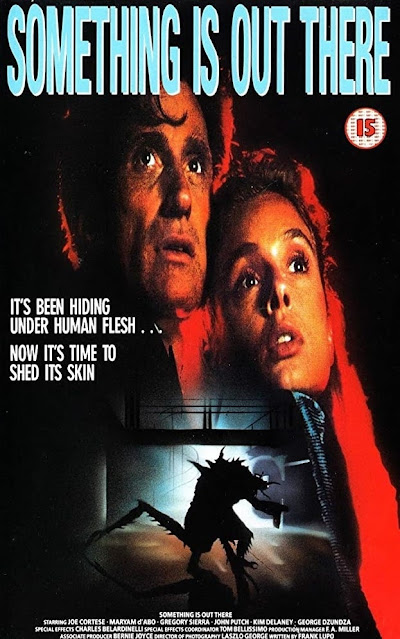PHENOMENALITY: *marvelous*
MYTHICITY: *poor*
FRYEAN MYTHOS: *adventure*
CAMPBELLIAN FUNCTION: *psychological*
Five years after the theatrical release of DARKMAN, Universal brought out two DTV sequels, both directed by Bradford May.
Though Peyton Westlake keeps the same "Phantom of the Opera" digs he had in the previous film, his former girlfriend never manages to locate him, so she's out of the picture for the duration. Unfortunately, thanks to the workmanlike script, Darkman's first opponent Durant managed to survive his helicopter crashing into a bridge, losing no more than a few months in a coma. On top of this good fortune, Durant's thespian counterpart Larry Drake got top billing for RETURN over the actor now essaying the bandage-wrapped crusader, Arnold Vosloo.
By a staggering coincidence, though Durant doesn't go looking for Darkman, his next business venture causes their paths to cross once more. Durant's criminal empire fell apart during his coma, so he decides to look up a mad scientist, Hathaway, who has been working on particle beam-weaponry for sale to the highest bidder. Since Hathaway needs a workshop to perfect his weapons, so Durant picks an existing laboratory and decides to muscle the owner, another scientist named Brinkman, into signing away his property for a song.
Though Durant kills the stubborn scientist, Westlake just happens to have approached Brinkman to collaborate on Westlake's pet project: to perfect the artificial skin that he hopes to use to cover his damaged features, which is also the substance he uses for his masquerades in his Darkman persona. So Darkman is not just pissed that Durant is back, but also that the evildoer has ruined another of the hero's chances for normalcy.
Darkman has two allies this time out. One is a crusading lady reporter who helps the hero expose Durant's return, and the other is the sister of Brinkman, who's tempted to sell the lab to Durant until she finds out the truth about her brother's murder. Neither of them is any more interesting than Durant and his thugs, though it's of some significance that the actress playing the sister is Renee O'Connor, who would sign on to play Gabrielle on the XENA WARRIOR PRINCESS show. Once all the plot points are set up, director and writers shake vigorously with multiple shootouts, fistfights, and deceptive masquerades.
One minor political joke shows up amidst the supporting villains. Durant's first customer for the beam-weapon is an ex-army vigilante hungry for fight crime, but he unlike Darkman is demeaned because he's said to be both "far right" and a "Nazi," as well as Durant's patsy to cull rival crime-overlords. Durant himself seems apolitical, but one of his goons just happens to be ex-KGB, making him the only halfway memorable henchmen. It might have been a decent joke if the writers had pitted the "Nazi" army guy against the "Commie" henchman, but instead they waste even the minor comic potential by having the army guy hurl his "Commie" insult against the also apolitical scientist Hathaway.


























